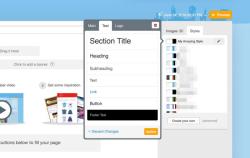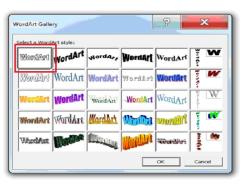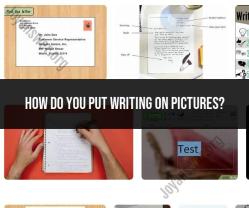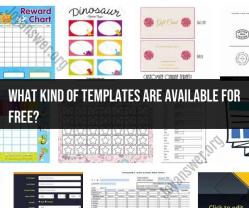How to customize with Style templates?
Customizing style templates can vary depending on what specifically you're working with—whether it's website templates, document styles, or other design-related templates. However, I can give you a general step-by-step guide that applies to many different types of templates:
Select the Template:
- Choose a template that suits your needs. Whether it's a website template, a document layout, a presentation design, or any other type of template, find one that serves as a good starting point for your project.
Identify Customization Needs:
- Determine what elements you need to customize. This could be text, colors, images, fonts, layout structures, or any other design components.
Access Editing Tools:
- Use the appropriate software or platform to edit the template. For instance:
- Website Templates: Use HTML/CSS editors or website builders like WordPress, Squarespace, or Wix.
- Document Templates: Utilize word processors like Microsoft Word, Google Docs, or design software like Adobe InDesign.
- Use the appropriate software or platform to edit the template. For instance:
Edit Text and Content:
- Replace placeholder text with your own content. Ensure that the text fits well within the design and is relevant to your project.
Modify Visual Elements:
- Adjust colors, images, and other visual elements to match your brand or project requirements. This might involve uploading your own images or changing the color scheme to align with your brand palette.
Customize Layout and Structure:
- Modify the layout if necessary. Resize or reposition elements to suit your preferences or specific content requirements.
Test and Review:
- After making changes, review the template to ensure everything looks cohesive and works well together. Test functionalities (if applicable) to ensure they operate as intended.
Save Your Work:
- Save your customized template in a separate file or within the platform you're using. This allows you to retain the original template for future use or modifications.
Finalize and Publish:
- Once you're satisfied with the customization, finalize your work and publish it if applicable. For websites, this might involve deploying the site; for documents, it could mean exporting the final version in the desired format.
Keep a Backup:
- Always keep a backup copy of both the original template and your customized version. This is useful in case you need to revert to the original or make additional changes later.
Remember, some templates might have limitations based on their design or the platform used to create them. In such cases, your customization options might be restricted. However, within the confines of the template, you can usually make significant adjustments to suit your needs.
How can Style templates be customized or personalized?
Style templates can be customized or personalized in a variety of ways, depending on the specific application or software you are using. However, some common methods include:
- Changing the colors, fonts, and formatting of text and elements. This is the most basic way to customize a style template.
- Adding or removing elements, such as headers, footers, or sidebars. This can give your template a more unique look and feel.
- Using images, graphics, and other visual elements to create a more visually appealing template.
- Adjusting the layout of the template to better suit your needs. This could include changing the size of margins, the spacing between elements, or the alignment of text.
What elements or aspects can be modified within Style templates?
The specific elements or aspects that can be modified within Style templates will vary depending on the application or software you are using. However, in general, you can usually modify the following:
- Fonts: You can change the typeface, size, weight, and style of fonts.
- Colors: You can change the color of text, backgrounds, and other elements.
- Formatting: You can change the alignment, indentation, and spacing of text.
- Margins: You can change the size of the margins around the edges of the template.
- Borders: You can add or remove borders around elements, and change the color, style, and thickness of borders.
- Images and graphics: You can add or remove images and graphics, and change their size, position, and alignment.
- Layouts: You can change the overall layout of the template, including the number and arrangement of columns and sections.
Are there limitations to customizing Style templates in certain applications or software?
Yes, there are some limitations to customizing Style templates in certain applications or software. For example, some applications may have a limited number of pre-defined styles, or they may not allow you to modify certain elements of the template. Additionally, some applications may have more advanced customization options than others.
Here are some specific examples of limitations that you may encounter:
- In Microsoft Word, you cannot change the default font or color scheme for new documents.
- In Google Docs, you cannot add or remove headers and footers from certain types of documents, such as letters.
- In PowerPoint, you cannot add or remove slides from certain types of presentations, such as slideshows.
It is always a good idea to consult the documentation for the specific application or software you are using to learn more about its customization options.









